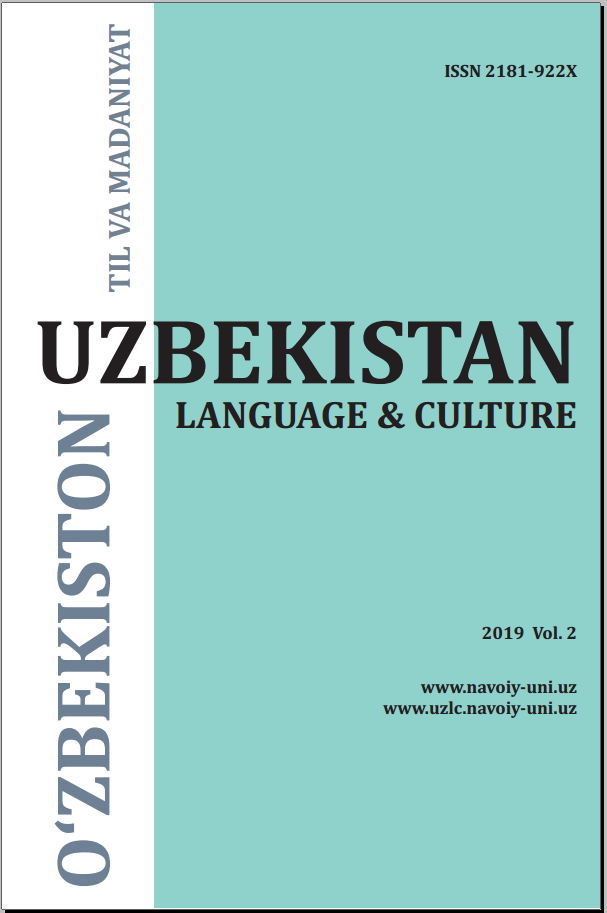Cultural Linguistics: Main Issues, Trends and Tasks
DOI 10.52773/tsuull.uzlc.2019.2/UBBD9506
Abstract
Linguistics of the XXI century is intensively developing the idea
that language is not only an instrument of communication but also the
cultural code of a nation. It happened due to the development of a new
anthropocentric paradigm, which gives the human the status of being “the
measure of all things” and focuses on studying the “human factor” in the
language. The emergence of the anthropocentric paradigm caused the
shift in linguistic views, methods of investigations and the emergence of
new interdisciplinary linguistic trends such as Sociolinguistics, Cognitive
Linguistics, Cultural Linguistics (Linguoculturology), Gender Linguistics,
etc., which focus on the study of relationships between language and
society, language and mind, language and culture. Among these trends,
one of the actively developing interdisciplinary linguistic sciences
is Cultural Linguistics (Linguoculturology) aimed to investigate the
correlation between language and culture, between linguistic meanings
and the concepts of universal and national cultures. Currently, though
Linguoculturology is a comparatively new science there distinguished
within it several trends: lexicographical, phraseological, conceptological,
stylistic and comparative. Each of these trends focus on the investigation
of a particular aspect of Cultural Linguistics and therefore they have their
own research problems and tasks.


